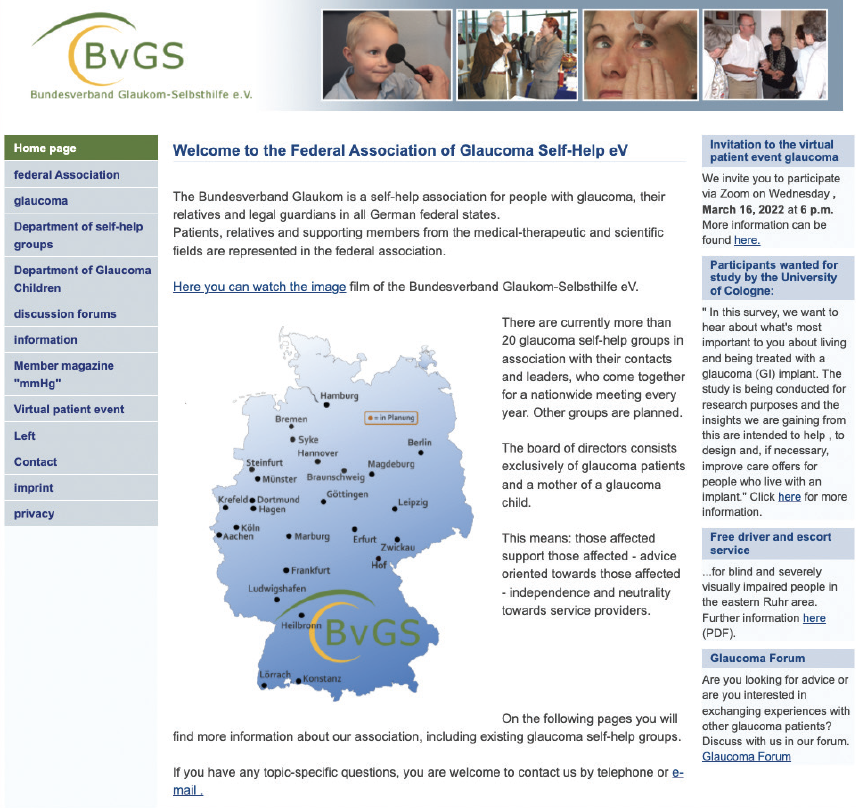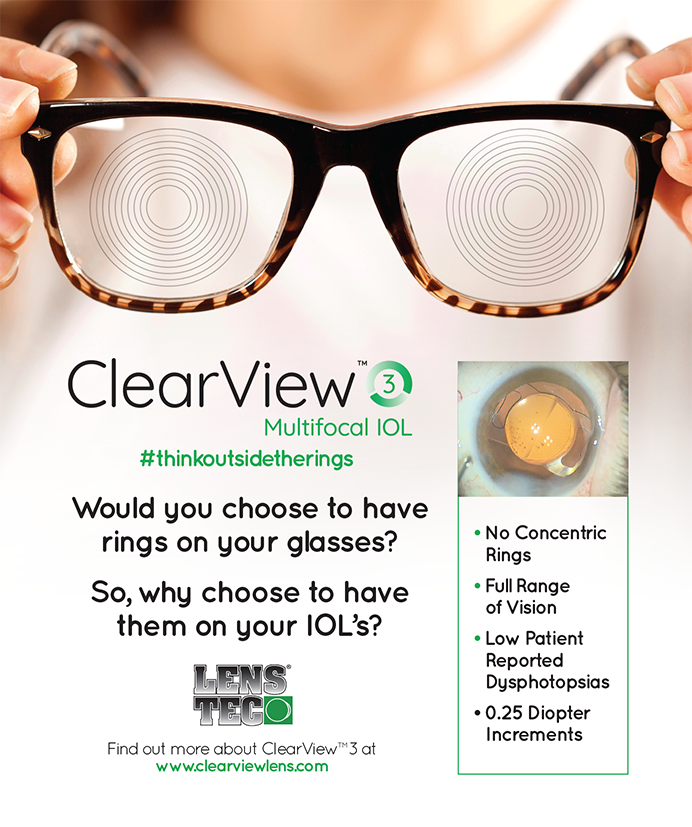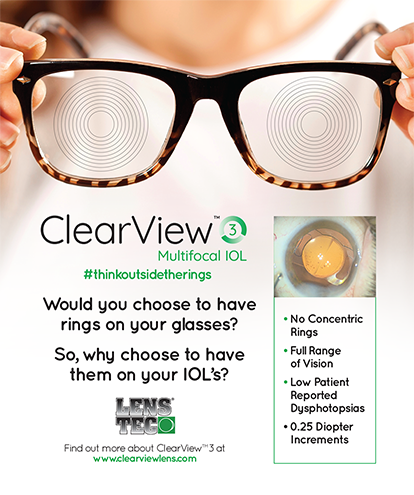

The approaches to and professional experiences with patients who have cataracts versus those who have glaucoma could not be more different. Cataract surgery has an incredible success rate and a high standard of safety. We can cure the condition within approximately 15 minutes—although a second intervention for posterior capsular opacification is sometimes required. The functional results of cataract surgery can be breathtaking. Rather than return the eye to its state before the onset of the cataract, surgery can provide patients with vision superior to what they ever had. A case in point is a patient with high myopia whose postoperative UCVA is 20/20 for the first time.
In contrast, glaucoma has no known cure. The goal of treatment is to preserve visual function and prevent further damage. Glaucoma surgery does not improve patients’ vision. In fact, a significant number of them report reduced vision after trabeculectomy or similar interventions, even if the reduction usually cannot be quantified objectively. That said, glaucoma management has its rewards. They include the smile of relief on a patient’s face when they hear that their disease remains stable after many years of IOP-lowering treatment.
Glaucoma is a lifelong disease for the patient and, it could be said, for the provider. Given the average human life expectancy, an individual diagnosed with glaucoma at 45 years of age will probably receive treatment by at least two generations of eye care specialists. This observation highlights what is most important in glaucoma management: a long-term perspective.
EDUCATION
Effective management over the course of a patient’s life demands continuing education.
Risks and benefits. We must discuss the nature of the disease time and again with our patients. We must educate them about risks—particularly those associated with nonadherence to prescribed medical therapy—and their individual chances of disease progression. Finding a stable visual field after a trying and exhausting perimetry presents an opportunity for encouragement. “See? Treatment is working. The disease is under control.”
Much has been learned about the pathogenesis of glaucoma, risk factors for the disease, and its association with systemic abnormalities. If we see a relatively young patient who has normal-tension glaucoma and a frightening arterial hypotension with a resistance ratio of 85/45 mm Hg and do not consider the latter parameter to be a factor in the glaucoma, we have missed something. Demonstrating to patients that we are constantly striving to better understand their disease and their needs can strengthen their confidence in our abilities and recommendations.
Options. When pharmacologic treatment alone cannot control glaucoma, we must educate patients about their surgical options and the benefits and risks of each. Patients with moderately elevated IOP and cataracts, for example, are often delighted by the prospect of reducing their medication burden and improving their IOP control and visual acuity by undergoing MIGS combined with cataract surgery and IOL implantation. In contrast, those with an IOP greater than 30 mm Hg on maximum tolerated medical therapy are better suited to more invasive glaucoma surgery such as trabeculectomy, deep sclerectomy, or the implantation of a glaucoma drainage device.
Whatever surgery the patient undergoes, the preoperative discussion must emphasize that the intervention is unlikely to be a final solution but rather an important step of a lifelong medical journey. Future surgery is a possibility, and new techniques are constantly being developed.
Helpful Resources for Glaucoma Patients
Initiativkreis Glaukomfrüherkennung
Online patient symposia platform

Bundesverband Glaukom-Selbsthilfe
Self-help website

DIAGNOSTIC ADVANCES
Patients with glaucoma have many doctor’s appointments and receive many diagnostic tests over the years. It is incumbent on us to spare them unnecessary examinations. We can be strategic about corneal thickness measurements, OCT scans of the optic nerve head, perimetry, and IOP readings.
The use of an IOP sensor (Eyemate, Implandata Ophthalmic Products), for example, can provide 24-hour IOP measurements and give us insight into the peaks and dips in each patient’s IOP. This strategy can also eliminate several appointments for Goldmann applanation tonometry.
LOYALTY
Patients who understand the treatment they are receiving are more likely to be loyal to the clinic and return for follow-up appointments on a regular basis. We can strengthen our relationships with patients through mailings and newsletters and by inviting them to follow us on social media. If they are not squeamish, we can suggest that they watch our surgical videos.
We can also encourage patients to participate in forums we have found to be helpful. Two examples in Germany are listed in the above sidebar.
CONCLUSION
Glaucoma care demands patience from the recipient and the provider. When we prioritize education, communication, and patients’ quality of life, we can optimize their care.




